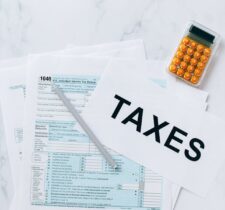If you’re a homeowner, you might have wondered, “Is there a lien on my house?” Property liens can impact your ability to sell or refinance your home, making it essential to understand their nature and consequences. A lien is a legal claim on your property as collateral for unpaid debts. They can arise from various sources, such as unpaid taxes, contractor disputes, or court judgments. Knowing how to check for liens and resolve them is critical for maintaining financial and property integrity. In this comprehensive guide, we’ll cover everything you need to know about property liens, their types, how to identify them, and steps to resolve or prevent them.
Is there a lien on my house?
A lien on your house means a creditor has a legal claim to your property due to unpaid debts. You can check for liens through your county recorder’s office or a title search. To resolve liens, clear the debt, or negotiate with the lienholder. Ensure to prevent liens by paying bills on time and verifying contractors are paid during home improvements.
What You Need to Know About Property Liens
A property lien is a legal right or interest a creditor has in a debtor’s property. When you own a home, it serves as collateral for debts, and liens can attach to the title if those debts remain unpaid. Common types include tax liens, mechanics’ liens, judgment liens, and voluntary liens like mortgages. Recognizing these categories helps homeowners better understand their rights and obligations.
Liens can restrict property transactions, complicating refinancing or selling. For example, if you’re selling your home, the lien must typically be paid off before or at closing. The lienholder’s rights remain until the debt is satisfied, making it crucial to address liens promptly. Ignoring liens can result in foreclosure or loss of property.
Checking for liens involves reviewing public records or hiring a title company. Title insurance companies often conduct lien searches as part of their services. Regular checks ensure no surprises when engaging in property-related transactions. Understanding lien laws in your state is also vital, as these regulations vary by jurisdiction.
To prevent liens, homeowners should maintain diligent financial habits, pay taxes promptly, and resolve disputes early. Contractors should provide lien waivers upon payment to prevent future claims. Regularly monitoring financial obligations and property records is a proactive approach to protecting your home.
How to Check if There Is a Lien on Your House
Use Online Public Records
To determine if there is a lien on your house, start by accessing online public records through your local county or city recorder’s office website. Many jurisdictions offer user-friendly platforms where you can search property records by entering your name or property address. This is often the quickest and most convenient way to check for liens. The records will provide details on any claims or encumbrances tied to your property, giving you a clear picture of its legal status.
Visit the County Recorder’s Office
If online tools are unavailable or incomplete, visiting the county recorder’s office in person is a reliable alternative. The staff can assist you in requesting a lien search for your property. By reviewing official records, you can identify whether any liens are currently attached to your home. This approach is particularly helpful for those who prefer direct communication or need assistance navigating the system.
Perform a Title Search
For a more thorough examination, consider hiring a title company to conduct a professional title search. These companies specialize in uncovering all claims or encumbrances on a property, including hidden or less obvious liens that might not appear in basic public records. A professional title search is especially useful if you are preparing to sell or refinance your home, as it ensures no surprises arise during the transaction process.
Review Your Credit Report
Another useful method for identifying certain types of liens, such as IRS tax liens, is to check your credit report. Credit reporting agencies often list these liens as part of your financial obligations. Regular credit monitoring not only helps you detect liens but also keeps you informed about your overall financial health.
Seek Legal Advice from a Real Estate Attorney
If the situation becomes complex or you suspect errors in the lien records, consulting a real estate attorney is a wise choice. Legal professionals can help you navigate lien searches, confirm the accuracy of findings, and provide expert advice on resolving disputes. Their guidance ensures that you handle any lien issues effectively and in compliance with the law.
Common Types of Liens on Properties
- Tax Liens: Tax liens are imposed by local, state, or federal authorities when taxes remain unpaid. These can include property taxes, income taxes, or estate taxes. Tax liens often take precedence over other claims and must be resolved before selling or refinancing the property.
- Mechanics’ Liens: Filed by contractors, subcontractors, or suppliers, mechanics’ liens are used when payments for services or materials are not fulfilled. They commonly arise during construction or renovation projects and serve as a legal tool to secure the owed amount.
- Judgment Liens: Judgment liens are created when a creditor wins a lawsuit against a debtor and the court rules in favor of the creditor. These liens can cover debts like medical bills, credit card balances, or personal loans and remain attached to the property until resolved.
- HOA Liens: Homeowners’ associations (HOAs) can place liens on properties for unpaid dues, assessments, or fines. If not addressed, HOA liens can lead to foreclosure, jeopardizing property ownership. Staying current on HOA fees is vital to avoid these claims.
- Voluntary Liens: Voluntary liens are agreed upon by homeowners, such as mortgages or home equity loans. These liens are expected as part of financial arrangements and remain on the property until the associated debt is fully paid.
How to Remove a Lien on Your House
Removing a lien from your property is a crucial step to ensure clear ownership and facilitate transactions such as selling or refinancing. Here is a step-by-step guide to help you navigate the process effectively:
- Verify the Lien: The first step is to confirm the validity of the lien. Review public records to ensure the lien is legitimate and accurate. If there are discrepancies or you suspect the lien is invalid, consult with a real estate attorney to investigate further. Legal professionals can help you determine whether the lienholder followed proper procedures when filing the claim.
- Negotiate with the Lienholder: Once the lien’s validity is confirmed, reach out to the lienholder to discuss repayment terms. In some cases, lienholders may be open to negotiations, such as agreeing to a partial payment or a structured repayment plan. This step can be particularly helpful if you’re facing financial difficulties or if the lienholder is willing to settle for less than the full amount.
- Pay Off the Debt: After negotiating, proceed to pay the agreed amount to the lienholder. Once the debt is fully settled, request a lien release document. This document serves as proof that the lien has been satisfied and is no longer enforceable against your property.
- File the Lien Release: After obtaining the lien release document, submit it to your local county recorder’s office. Filing the release ensures that the lien is officially removed from public records. This step is essential for clearing your property title and avoiding future complications.
- Challenge Invalid Liens: If you believe a lien is fraudulent or was filed in error, legal action may be necessary to remove it. Consult with an attorney to explore options for challenging the lien in court. Proper documentation and legal expertise are critical in proving the lien’s invalidity and ensuring its removal.
Preventing Liens on Your Property
Timely Payments Are Crucial
One of the most effective ways to avoid liens on your property is to make timely payments on all financial obligations. This includes property taxes, mortgages, and payments to contractors for services rendered. Delayed payments not only accumulate interest and penalties but also increase the risk of a lien being placed on your property. By staying on top of due dates and maintaining a proactive approach to your financial responsibilities, you can minimize this risk significantly.
Verify Payments to Contractors
When undertaking home renovations or construction projects, it is essential to ensure that all subcontractors and suppliers are paid. Even if you’ve made payments to your primary contractor, unresolved payments to subcontractors can result in mechanics’ liens on your property. To prevent this, request lien waivers from contractors and verify that payments are distributed correctly to everyone involved in the project.
Document All Agreements
Clear and written documentation of financial agreements is another key step in avoiding liens. Whether it’s a payment plan, a loan agreement, or a contract with a service provider, having detailed records ensures transparency and accountability. Written agreements protect your interests and provide evidence in case of disputes. They are especially critical in large transactions or when dealing with multiple parties.
Monitor Property Records Regularly
It’s important to regularly review your property title to check for any unexpected claims or liens. Public records can reveal if someone has filed a lien against your property without your knowledge. Staying vigilant about monitoring these records allows you to address potential issues early before they escalate.
Consult Financial or Legal Professionals
Managing large debts or complex financial obligations can be overwhelming. Seeking guidance from financial advisors or real estate attorneys can help you navigate potential risks and ensure compliance with legal and financial requirements. Professionals can offer advice tailored to your situation, helping you prevent liens and maintain your property’s clear title.
Final Remark
Effectively understanding and managing liens is essential for protecting your home and its financial integrity. Regularly reviewing property records helps identify and address any claims early, reducing the risk of complications. Promptly resolving outstanding debts ensures that liens do not disrupt your ability to sell, refinance, or maintain ownership of your property. Developing and maintaining strong financial habits, such as staying current on payments and keeping thorough records, is critical for preventing liens from arising in the first place. By taking these proactive steps, homeowners can safeguard their property from legal claims and facilitate smooth and hassle-free transactions in the future.
FAQ’s
Q: What happens if there’s a lien on my house?
A: A lien can restrict your ability to sell or refinance until resolved. Failure to address it could result in foreclosure.
Q: How can I check for liens on my property?
A: You can check through online public records, the county recorder’s office, or a professional title search.
Q: Can a lien be removed without payment?
A: In some cases, liens can be removed through negotiation or legal action if found invalid.
Q: Do property liens expire?
A: Lien expiration depends on state laws and the type of lien. Some liens, like judgment liens, may require renewal.
Q: How much does it cost to remove a lien?
A: Costs vary depending on the debt and legal fees, if applicable. Resolving through direct payment or settlement is often the most cost-effective approach.








